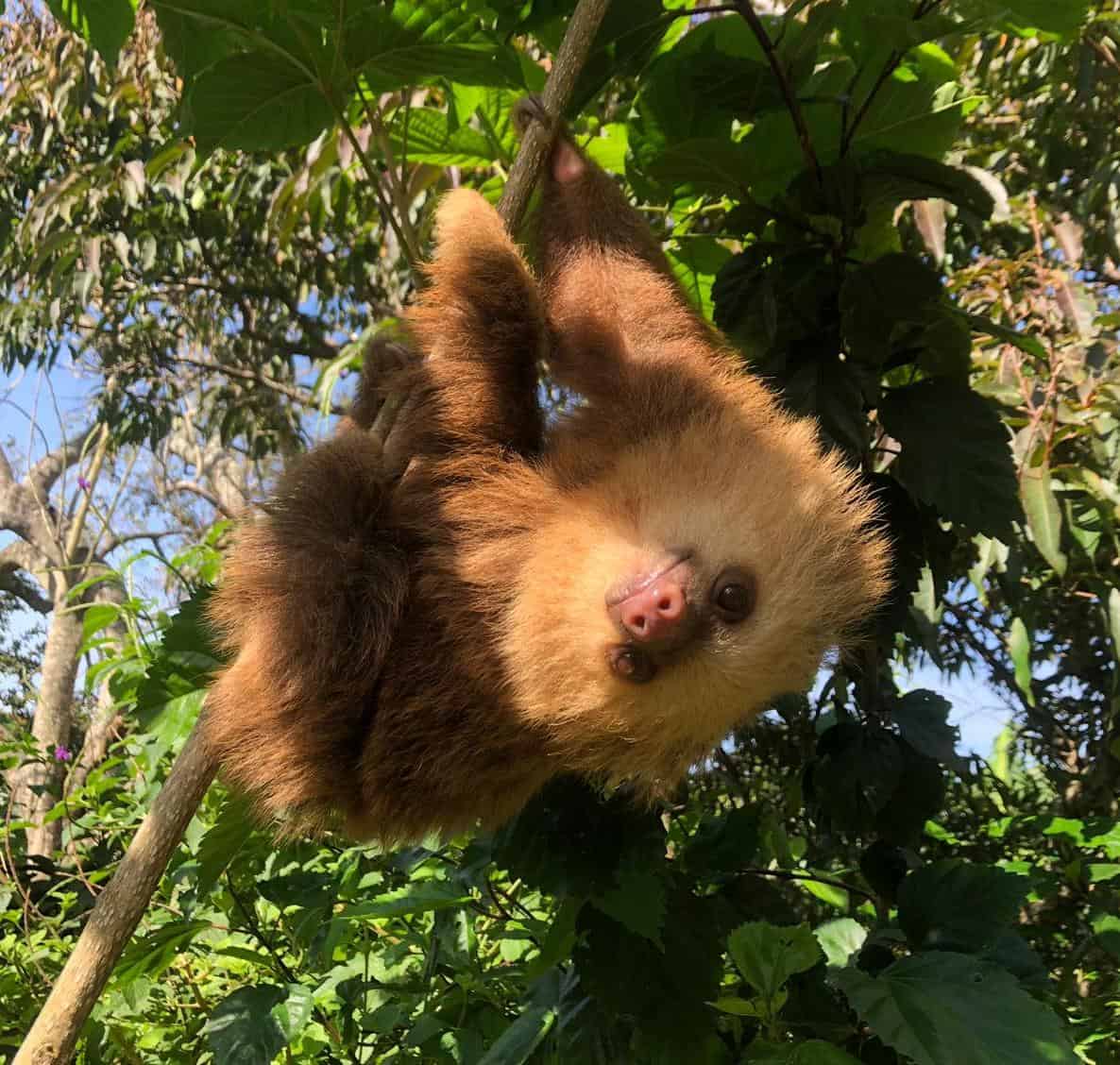My name is Amie Coltman, I am studying wildlife conservation at the University of Salford, and I am a Sloth Rehabilitation Intern at the Toucan Rescue Ranch.
I initially became interested in two-fingered sloths (Choloepus hoffmanni) when I saw them in a documentary at the age of six. At Toucan Rescue Ranch, I help the vets and the Sloth Team rehabilitate the young and adult sloths. This includes providing food for the sloths, which is a mixture of cooked vegetables, leaves and sometimes egg; implementing enrichment for the sloths, which encourages natural behaviors; cleaning their enclosures; and teaching the younger sloths how to go to the toilet by taking them to a grassy area with trees and stimulating them using the scent of sloth urine.
Sloths are amazing creatures and are quite misunderstood. Although they look lazy and slow and on average only move 3 meters per minute in the trees, when they want to move quickly, for a short duration of time they can.
Just like the two-fingered sloths, three-fingered sloths (Bradypus) can swim, but unlike them, they have eight or nine cervical vertebrae rather than five to six. Sloths and manatees are the only mammals that don’t have seven cervical vertebrae.
Two-fingered sloths are also the mammal with the lowest body temperature, fluctuating between 24-33° C. Due to their not having many muscles, they must move in and out of the sun to regulate their body temperature, as they are unable to shiver.
Most of the sloths at the Toucan Rescue Ranch are releasable, but some of them have disabilities that make them permanent residents. Every releasable sloth is given the opportunity to be wild and is monitored in the area where they are released to make sure they successfully adjust. If they do not, they are taken back to the ranch to remain there as a resident until it is decided they are ready for another opportunity for a life in the wild.
— Amie Coltman is a Sloth Rehabilitation Intern at Toucan Rescue Ranch.
This article was produced by The Toucan Rescue Ranch. The Toucan Rescue Ranch specializes in helping wild animals recover so that they can be reintroduced into the wild.






